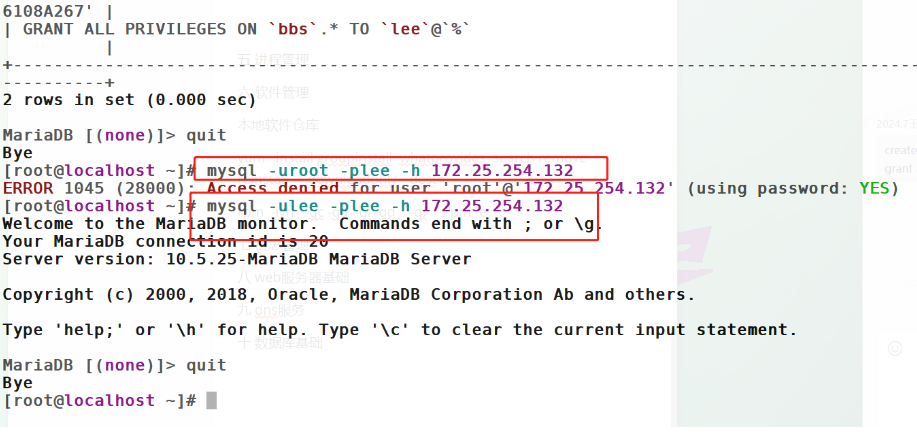标准IO
1.I input 输入 键盘
O output 输出 显示器
2.一般我们调用相关IO操作时必须调用stdio头文件库,其位置在/usr/include/stdio.h,linux系统中最高管理者是root。
stdio.h ~ stdio.c ~ libc.so ~ /usr/lib so动态库
3.读写文件操作步骤:
(1)打开文件 FILE
(2)IO操作
(3)关闭文件
4.流: FILE*
数据从文件当中流入和流出所体现出来的字节流叫做流
流的分类:
二进制流:
二进制数据的流
文本流:
ASCII码数据的流
5.FILE 结构定义的对象 FILE * 称之为流对象,也叫文件流指针。
包含:stdin(标准输入),stdout(标准输出),stderr(标准错误输出)。
打开文件操作:
fopen函数:
![]()
#include <stdio.h>
int main(int argc, char *argv[])
{
FILE* fp = fopen("1.txt","w");
if(NULL == fp)
{
printf("fopen error");
return 1;
}
// fputc();
//fclose();
return 0;
}2, 读写操作相关,
fgetc/fputc,,,,,,一个字符,
fgetc(int c ,FILE*strem);
fgets/fputs....,,一次一行。。。
fread/fwrite....自定义大小,,二进制
(1)fgetc/fputc该函数一次只能取出或输入单个字符
![]()
![]()
#include <stdio.h>
int main(int argc, char *argv[])
{
FILE* fp = fopen("1.txt","r");
if(NULL == fp)
{
printf("fopen error");
return 1;
}
while(1)
{
int c = fgetc(fp);
if(EOF ==c) // -1
{
break;
}
printf("%c",c);
}
printf("\n");
fclose(fp);
return 0;
}
#include <stdio.h>
int main(int argc, char *argv[])
{
FILE* fp = fopen("1.txt","w");
if(NULL == fp)
{
printf("fopen error");
return 1;
}
int ret = fputc('h',fp);// end of file
if(EOF == ret)
{
printf("fputc error");
return 1;
}
fputc('e',fp);// end of file
fputc('l',fp);// end of file
fputc('l',fp);// end of file
fputc('o',fp);// end of file
fclose(fp);
return 0;
}(2)fgetc/fputc该函数一次只能取出或输入一行字符串
![]()
![]()
#include <stdio.h>
#include <string.h>
int main(int argc, char *argv[])
{
FILE* fp = fopen("/etc/passwd","r");
if(NULL == fp)
{
printf("fopen error\n");
return 1;
}
char buf[512]={0};
while(1)
{
memset(buf,0,sizeof(buf));
if(fgets(buf,sizeof(buf),fp))
{
printf("%s\n",buf);
}
else
{
break;
}
}
fclose(fp);
return 0;
}
#include <stdio.h>
int main(int argc, char *argv[])
{
FILE* fp = fopen("1.txt","w");
if(NULL == fp)
{
printf("fopen error\n");
return 1;
}
char buf[500]="你好,fgets测试";
int ret = fputs(buf,fp);
if(EOF == ret)
{
printf("fputs errors\n");
return 1;
}
fclose(fp);
return 0;
}
(3)fread/fwrite自定义大小,可以对二进制数据进行操作

#include <stdio.h>
#include <string.h>
typedef struct
{
char name[10];
int age;
char phone[15];
}PER;
int main(int argc, char *argv[])
{
FILE* fp = fopen("1.hex","r");//binary
if(NULL == fp)
{
printf("fopen error\n");
return 1;
}
;
PER per;//memset
bzero(&per,sizeof(per));//bit zero
fread(&per,sizeof(per),1,fp);
printf("name:%s age:%d phone:%s\n",per.name,per.age,per.phone);
fclose(fp);
return 0;
}#include <stdio.h>
#include <string.h>
typedef struct
{
char name[10];
int age;
char phone[15];
}PER;
int main(int argc, char *argv[])
{
FILE* fp = fopen("1.hex","w");//binary
if(NULL == fp)
{
printf("fopen error\n");
return 1;
}
PER per;//memset
bzero(&per,sizeof(per));//bit zero
strcpy(per.name, "zhangsan");
per.age = 20;
strcpy(per.phone,"123467");
fwrite(&per,sizeof(PER),1,fp);
fclose(fp);
return 0;
}
stdin(标准输入),stdout(标准输出),stderr(标准错误输出)
#include <stdio.h>
/*
*当a.out开始运行的时候 ,系统就已经打开了3个FILE*
stdin 标准输入
stdout 标准输出
stderr 标准错误输出 区别在于缓存区
* */
int main(int argc, char *argv[])
{
//scanf scanf("%s %s ")
char buf[512]={0};
fgets(buf,sizeof(buf),stdin);// hello aaa bbb ccc\n
//printf("%s\n",buf);
//fputs(buf,stdout);
fputs(buf,stderr);
return 0;
}


















